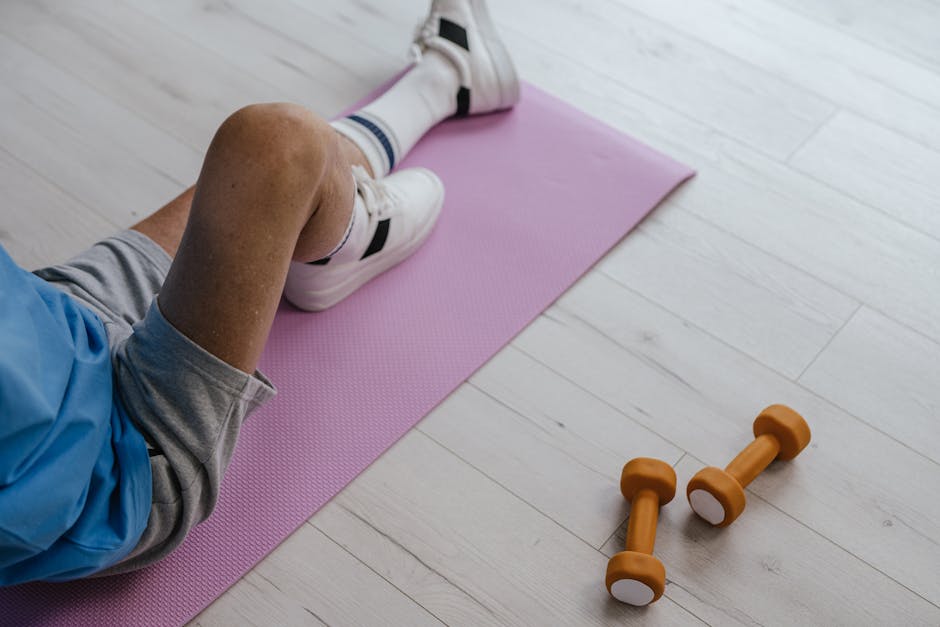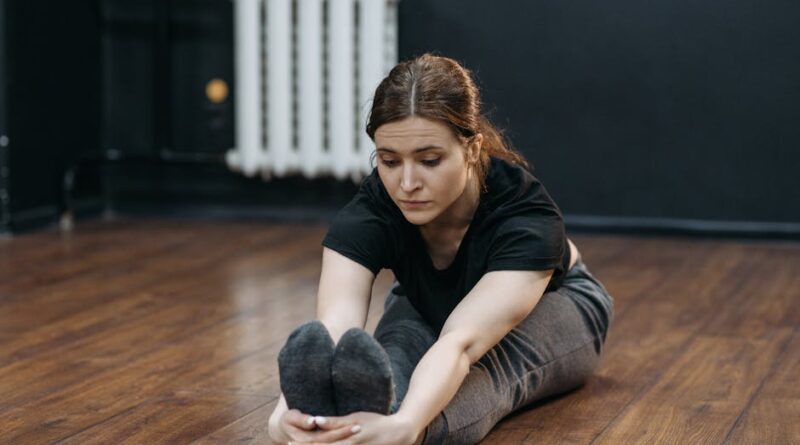Staying Active with Joint Issues: Overcoming Obstacles and Embracing Movement
Joint issues, whether due to arthritis, injury, or other conditions, can pose significant challenges to staying active and maintaining a healthy lifestyle. However, it is crucial to understand that physical activity is essential for overall well-being, even with joint problems. In this comprehensive guide, we will explore various strategies, exercises, and tips to help individuals with joint issues stay active, improve mobility, and enhance their quality of life.
The Importance of Staying Active with Joint Issues

Despite the pain and discomfort associated with joint issues, staying active is vital for several reasons. Regular physical activity can help improve joint flexibility, reduce stiffness, strengthen the muscles surrounding the joints, and alleviate pain. Additionally, exercise promotes weight management, which is crucial for reducing the strain on the joints and preventing further damage.
Moreover, physical activity has been linked to numerous health benefits, including improved cardiovascular health, better mood, enhanced cognitive function, and reduced risk of chronic diseases. By staying active, individuals with joint issues can significantly improve their overall quality of life and maintain their independence as they age.
Choosing the Right Activities

When it comes to staying active with joint issues, not all exercises are created equal. It is essential to choose activities that are gentle on the joints while still providing a good workout. Low-impact exercises such as swimming, cycling, walking, and yoga are excellent choices for individuals with joint problems. These activities help strengthen the muscles, improve flexibility, and promote overall joint health without putting undue stress on the body.
Water-based activities, in particular, are highly recommended for individuals with joint issues, as the buoyancy of water reduces the impact on the joints while allowing for a full range of motion. Aquatic exercises can be an excellent way to build strength, improve cardiovascular fitness, and relieve joint pain.
Strength Training and Resistance Exercises

Strength training plays a crucial role in supporting joint health and function. By building muscle strength, individuals with joint issues can better support their joints and reduce the risk of injury. Resistance exercises using bands, weights, or body weight can help improve muscle tone, increase bone density, and enhance overall stability.
It is essential to start with light weights and gradually increase the intensity to avoid exacerbating joint pain. Working with a qualified fitness trainer or physical therapist can help individuals with joint issues develop a safe and effective strength training routine tailored to their specific needs and limitations.
Flexibility and Range of Motion Exercises

Improving flexibility and range of motion is essential for individuals with joint issues. Stretching exercises can help increase joint mobility, reduce stiffness, and alleviate pain. Activities such as yoga, Pilates, and tai chi focus on gentle movements that promote flexibility, balance, and relaxation.
Regular stretching can also help prevent muscle imbalances, which can contribute to joint pain and dysfunction. Incorporating dynamic stretching, static stretching, and mobility exercises into a daily routine can have significant benefits for individuals with joint issues.
Cardiovascular Exercise for Joint Health
Cardiovascular exercise is essential for maintaining heart health, promoting weight loss, and improving overall fitness. For individuals with joint issues, low-impact cardio activities such as cycling, elliptical training, and swimming are ideal choices. These exercises provide a great cardiovascular workout without putting undue stress on the joints.
Aerobic activities can help individuals with joint issues manage their weight, reduce inflammation, and improve circulation to the affected joints. It is essential to listen to the body, start slowly, and gradually increase the intensity and duration of cardio workouts to avoid exacerbating joint pain.
Mind-Body Practices for Joint Health
In addition to physical exercises, mind-body practices such as meditation, deep breathing, and mindfulness can be beneficial for individuals with joint issues. These practices help reduce stress, promote relaxation, and improve mental well-being, which can have a positive impact on overall joint health.
Stress and anxiety can exacerbate joint pain and inflammation, so incorporating relaxation techniques into a daily routine can help individuals with joint issues manage their symptoms more effectively. Mind-body practices can also enhance self-awareness, improve focus, and increase resilience in the face of chronic pain.
Adapting Exercise Routines for Joint Issues
When designing an exercise routine for individuals with joint issues, it is essential to consider their specific limitations and challenges. Modifications and adaptations may be necessary to ensure that the workouts are safe, effective, and enjoyable. Working with a knowledgeable fitness professional or physical therapist can help individuals with joint problems develop a customized exercise plan that meets their needs.
It is crucial to listen to the body, pay attention to pain signals, and adjust the intensity or duration of exercises as needed. Over-exertion or improper form can lead to further joint damage, so it is essential to prioritize safety and proper technique when engaging in physical activity with joint issues.
Common Misconceptions about Staying Active with Joint Issues
One common misconception about staying active with joint issues is that exercise will worsen the condition. In reality, the right kind of exercise can help improve joint health, reduce pain, and enhance mobility. It is essential to consult with a healthcare provider or physical therapist to determine the most appropriate activities for individual needs.
Another misconception is that individuals with joint issues should avoid physical activity altogether. While it is crucial to choose activities that are gentle on the joints, staying sedentary can actually worsen joint pain and stiffness over time. Finding a balance between rest and movement is key to managing joint issues effectively.
Conclusion
In conclusion, staying active with joint issues is not only possible but highly beneficial for overall health and well-being. By choosing the right activities, incorporating strength training, flexibility exercises, and cardiovascular workouts, individuals with joint problems can improve their mobility, reduce pain, and enhance their quality of life.
It is essential to listen to the body, work with qualified professionals, and make adjustments as needed to ensure that exercise routines are safe and effective. With dedication, perseverance, and a positive attitude, individuals with joint issues can overcome obstacles, embrace movement, and enjoy the numerous benefits of an active lifestyle.
To wrap things up, remember that staying active with joint issues is a journey that requires patience, commitment, and a willingness to adapt. By prioritizing physical activity, individuals with joint problems can take control of their health, build strength, and experience a renewed sense of vitality and well-being.




